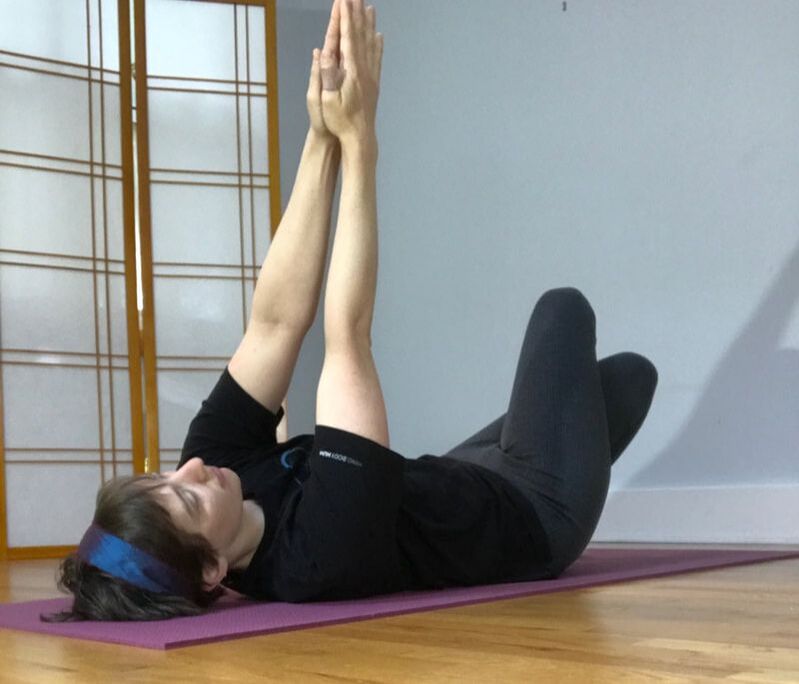|
This class is an exploration of various positions, and how we send the breath into the chest, and into the abdomen (an anatomical impossibility, but a useful image) --sometimes called seesaw breath in other lessons. The recording is edited for this evening (I've taken out the 5 minutes when we were off line), and is posted below in audio only. Meanwhile, here is an explainer video to help you understand a few things that are going on when we breathe, and a few reasons why we would want to do a lesson that takes on the disturbances that many of us have: tightness in the intercostal muscles, for example, or only breathing in the chest or the abdomen. What this class does not do is teach you how to breathe: why? Because Feldenkrais classes give you many experiences to learn within, so that what emerges is an organization that YOU choose. This avoids people mistakenly taking on one way, thinking it is the right way, and adapting that one way to meet all situations. After all, we need many ways to breathe, an many shapes to be in to meet all the demands of our lives. One right way isn't enough. Knowing what is possible, and trying many things, is what feeds our nervous system's bank of choices to choose from, building wise body-minds. If you would like to revisit the ideas of this lesson, here is an idea: 1. Try the lesson in your bed. 2. Try one position that you remember, and experiment with the seesaw breathing maneuver slowly, then quickly. Hint: avoid arching your back when breathing into your abdomen. If you feel a bit sore in your back, it’s a possibility that you are doing something unnecessary there. Try placing one of your hands behind your low back to feel what is going on as you do that. See if you can soften there. The audio for this is on Patreon: Heather Danso Emanuel GCFP | Creating Movement lessons & puzzles for health and wellness | Patreon
0 Comments
Today's lesson is a balancing of the muscles that fold us, and the muscles that hold us up - in other words, we are organizing, discerning, and coordinating the muscles along the spine. That being said, many things happen: the diaphragm is addressed in relation to folding and twisting. In twisting, there are elements of side bending, of curling, and of backbending, so it is a lovely way to actually lower the unnecessary work along the spine.
Did you feel taller? Did your head feel on differently? Did you find more freedom in your thoracic spine and did that impact your ability to twist and to roll your head? This lesson is now on Patreon This is a variation on Extensor and Flexor lessons similar to lesson 5 in the book Awareness Through Movement. Mostly we are lying on our backs, often with legs crossed, and arms long extended forward towards the ceiling.
This may be a challenging lesson. Try on an attitude of curiosity, rather than going for a goal. The end point is not important, it is the learning along the way that matters. The magic comes from letting the head be HEAVY. Not lifting the head... The recording at times is not the best, which probably is when I'm working with students in the room.
Releasing the Hips by holding the feetIn today's lesson, we will do movements similar to this, in a lesson based on the Alexander Yanai Awareness Through Movement® lesson. The image can be useful, as we use our eyes to learn, as well as our sensing. But, as with any image, the purpose is to help you discover the possibility for movement within your own system, and that possibility may be smaller, feel different, require a speed that allows for you to deeply sense yourself.
Only work in ease and curiosity, when you are stuck, use your imagination. Next week, we continue on with building intelligence in the hip-joint, which affects the knees, and the feet! Audio to be posted after class this evening. |
HOW-TORecorded at public classes, All audio classes are now on Patreon. Please read the HOW-TO before doing a lesson. Archives
April 2024
Categories
All
|
||||||||||||||
Heather Emanuel, GCFPSchedule Appointment
|
|


 RSS Feed
RSS Feed